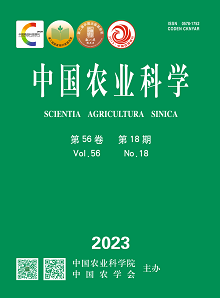【Objective】 The purpose of this study was to investigate the effects of replacing partial chemical fertilizers with Chinese milk vetch and rice straw on double rice yield and the soil labile organic carbon fractions, carbon pool management index of the paddy soil based on four consecutive years of field experiment. 【Method】 The double-season rice field experiment was conducted, and then yield of rice yield early and late rice, contents of soil organic carbon, soil high labile, medium labile, labile and no labile organic carbon were measured after four years experiment, then soil carbon pool management index were calculated. There were six treatments: (1) Winter fallow + N, P, K (CF); (2) Chinese milk vetch+N, P, K (MV); (3) Winter fallow + low weight of rice straw returning+N, P, K (RSl); (4) Winter fallow+high weight of rice straw returning+N, P, K (RSh); (5) Chinese milk vetch + low weight of rice straw returning+N, P, K (MV+RSl); (6) Chinese milk vetch + high weight of rice straw returning+N, P, K (MV+RSh). After harvest of late rice, 0-15 cm surface soil was collected. Potassium dichromate method was used to determine the content of soil organic carbon, and potassium permanganate oxidation method was used to determine the content of soil organic carbon with high labile (33 mmol·L-1), medium labile (167 mmol·L-1) and labile (333 mmol·L-1). 【Result】 Under the equal nitrogen, phosphorus and potassium nutrient inputs, the double-season rice yield under the MV+RSh treatment differed significantly from the CF and RSl treatments, while there was no significant difference in rice yield between the other treatments, and the total double-season rice yield was the highest under the RSl treatment at 13 347 kg·hm-2 and the lowest in the MV+RSh treatment at 11 687 kg·hm-2. After four years of continuous trials, the MV+RSh, RSh, MV+RSl, RSl, and MV treatments significantly increased soil organic carbon by 42.0%, 32.9%, 29.9%, 28.3%, and 26.3% (P<0.05), respectively; soil labile organic carbon content was increased by 23.9%-56.4% in each treatment, and soil no labile organic carbon content under MV+RSh, RSh, MV+RSl, RSl, and MV treatments significantly was increased by 37.3%, 28.6%, 25.8%, 24.1% and 23.4% (P<0.05). Compared with the CF treatment, soil high labile organic carbon was increased by 12.3%-27.7%, medium labile organic carbon was increased by 5.6%-20.0%, and labile organic carbon was increased by 9.9%-26.3% under MV+RSh, MV+RSl, MV, RSh and RSl treatments. The CF、MV、RSl、MV+RSl、RSh、MV+RSh treatments increased the soil organic carbon pool management index by 25.5%-61.7%.【Conclusion】 Under four consecutive years of equal nitrogen, phosphorus and potassium nutrient inputs, returning Chinese milk vetch and rice straw replacing part of the chemical fertilizer dosage could ensure double-season rice yields and increase soil organic carbon content, and also help to increase the content of high labile, medium labile, labile and no labile soil organic carbon, all of which were most significantly increased by the treatment of MV+RSh. The contribution of rice straw alone to the increase in soil organic carbon content was greater than that of Chinese milk vetch alone. To sum up, in the southern double-season rice area, within a certain range of substitution, the return of Chinese milk vetch and rice straw to the field could reduce the amount of chemical fertilizer and ensure rice yield, which was of great significance for green and sustainable rice production.









